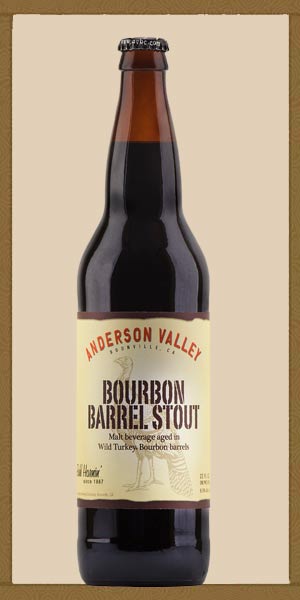 NOW THIS is an uncommon treat. Already known for their thoughtful sourcing of ingredients and patience (“We have no secrets, but if we were to, one would be time,” says co-founder Jeffrey Stuffings), Jester King’s Encendia is a beer with a particularly laborious history. It’s a fully 11% American wild ale brewed in collaboration with Kristina Bozic of West Lakeview Liquors, who helped Jester King to source the mezcal barrels in which the beer aged for 11 months. That already would have made for a lengthy gestation, but the brewery was forced to wait another full year before releasing in Chicago due to their use of an uncommon Mexican spice, epazote. Evidently the TTB was skeptical of the ingredient, which purportedly has a distinctly tangy and herbal taste, and in large doses can be poisonous and/or hallucinogenic. Hence the holdup. Fortunately, Jester King’s brews are well-suited to cellaring, so by the time the TTB got over their huff (or performed their due diligence, depending on your perspective) the beer’s two-year maturation had become a point of interest instead of a liability. Thus the limited supply of bottles released yesterday at West Lakeview Liquors sold out within hours, pulled straight from the box, bypassing the shelves, and landing in eager hands two at a time. And with good reason, for Encendia is a remarkable specimen.
NOW THIS is an uncommon treat. Already known for their thoughtful sourcing of ingredients and patience (“We have no secrets, but if we were to, one would be time,” says co-founder Jeffrey Stuffings), Jester King’s Encendia is a beer with a particularly laborious history. It’s a fully 11% American wild ale brewed in collaboration with Kristina Bozic of West Lakeview Liquors, who helped Jester King to source the mezcal barrels in which the beer aged for 11 months. That already would have made for a lengthy gestation, but the brewery was forced to wait another full year before releasing in Chicago due to their use of an uncommon Mexican spice, epazote. Evidently the TTB was skeptical of the ingredient, which purportedly has a distinctly tangy and herbal taste, and in large doses can be poisonous and/or hallucinogenic. Hence the holdup. Fortunately, Jester King’s brews are well-suited to cellaring, so by the time the TTB got over their huff (or performed their due diligence, depending on your perspective) the beer’s two-year maturation had become a point of interest instead of a liability. Thus the limited supply of bottles released yesterday at West Lakeview Liquors sold out within hours, pulled straight from the box, bypassing the shelves, and landing in eager hands two at a time. And with good reason, for Encendia is a remarkable specimen.
Using a bit of roasted barley, the beer pours a hazy mid-amber, no doubt also taking some color from its time in mezcal barrels. A wide-laced whitish head forms briefly but settles into a thin film fairly quickly. The aroma is not overpowering but still deeply layered, invoking an unmistakably south-of-the-border sweet/spicy interplay of desert fruit, pepper, slightly musty pepper, characteristic Jester King funk, a whiff of musty yeast (really quite clean despite the age, though), and a touch of specialty malt. Jeffrey admits that the finished beer may not even show that much epazote character (as if we laypeople could tell), but certainly the other adjuncts of agave nectar and ancho chile come through readily in the initial flavor, enlivening the lips and the back of the tongue with a prickle that stops short of heat. Speaking of, neither is there much alcohol warmth or boozy slickness, despite the beer’s 11% ABV; presumably its two years to develop have smoothed those edges, leaving it a little creamy from the lactobacillus but still quite dry and tongue-gripping. Sourness is present but not overpowering, and that inevitable wild edge kicks in especially towards the finish in a layered aftertaste, eventually spreading from the center of the embouchure out towards the side and back of the cheeks, filtering in between the pinpoints of spice to leave the palate coated but not saturated. It would have been preferable to try the beer fresh for the sake of comparison, but there’s no sense of lost character in this aged specimen. Nor really even regret that it took so long to come to us. Since after all, time is the secret–isn’t it?
Served: 750 ml bottle (West Lakeview Liquors)
Rating: 92










